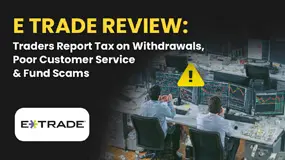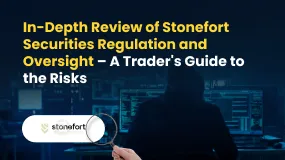简体中文
繁體中文
English
Pусский
日本語
ภาษาไทย
Tiếng Việt
Bahasa Indonesia
Español
हिन्दी
Filippiiniläinen
Français
Deutsch
Português
Türkçe
한국어
العربية
Can Traders Expect Opportunities Amid Lowered CPI Rates?
Abstract:Explore the significance of the lowest inflation rate in over two years, its impact on the Consumer Price Index (CPI), and the opportunities it presents for traders. Delve into how this eases Federal Reserve's tackling of inflation and how Wall Street reacted, as well as how the dip in CPI benefits workers' wages.

The month of June was a historic one for inflation, marking the lowest annual rate in over two years. This momentous occasion was a result of a decline in costs as well as comparisons to an era when price surges were hitting their highest in over four decades.
The Consumer Price Index (CPI), a renowned gauge of inflation, saw a year-on-year increase of 3%, the most modest growth since March 2021. Meanwhile, prices for an array of goods and services, as measured on a monthly basis, saw a rise of 0.2%.
Interestingly, this shift undercuts the Dow Jones' projections, which had anticipated rises of 3.1% and 0.3% respectively.
(Striking infographic illustrating year-over-year CPI changes up to June 2023)

When we remove the inherently unpredictable food and energy prices from the equation, the core CPI experienced a 4.8% annual and 0.2% monthly increase. While the annual rate represents the lowest since October 2021, it still falls shy of the consensus estimates, which had forecast respective increases of 5% and 0.3%.
These surprising figures present the Federal Reserve with some much-needed wiggle room as they tackle inflation, which hit a staggering 9% annual rate just a year prior — the highest since November 1981.
As George Mateyo, Chief Investment Officer at Key Private Bank, puts it, “Today's report confirms that even though the country is dealing with blistering temperatures outside, inflation is finally chilling out.” This marks a major victory for the Federal Reserve, as their policies seem to be taming inflation while not hampering growth.

However, the Federal Reserve's battle isn't over yet. Core inflation is still well over the 2% annual target, which means another rate hike is still on the table later this month, according to Mateyo.
The Federal Reserve anticipates a continued decline in the inflation rate, especially as costs of shelter ease, a factor that accounts for roughly a third of the CPI. Despite this, the shelter index saw a 0.4% uptick last month, contributing about 70% to the headline CPI increase.
Wall Street greeted this report with enthusiasm, resulting in Dow Jones Industrial Average futures climbing nearly 200 points. Meanwhile, Treasury yields saw a universal drop.
Despite these positive reactions, traders are still banking on a quarter percentage point rate hike when the Fed convenes on July 25-26.
However, the market suggests this could be the last hike before officials pause to let the previous series of increases percolate through the economy.
Back when inflation began its ascent in 2021, Federal Reserve officials and economists believed it would be “transitory,” fading as Covid-specific factors eased. However, when inflation displayed surprising tenacity, the Fed responded with a series of hikes, culminating in a 5 percentage point increase since March 2022.
On the other hand, crypto traders may expect good opportunities in trading Crypto.
Despite the overall easing in CPI, some sectors bucked the trend. For instance, energy prices went up 0.6% for the month. Yet, in a twist of fate, the energy index actually fell 16.7% from a year ago. Other sectors saw more relief, with food prices rising just 0.1%, used vehicle prices decreasing 0.5%, and airline fares plummeting 3%.
The dip in CPI also brought good news for employees, as real average hourly earnings, adjusted for inflation, increased 0.2% from May to June, and rose 1.2% on an annual basis.
Stay ahead of the curve and keep tabs on all market updates with the WikiFX App. Download it here: https://www.wikifx.com/en/download.html for all the latest news at your fingertips.

Disclaimer:
The views in this article only represent the author's personal views, and do not constitute investment advice on this platform. This platform does not guarantee the accuracy, completeness and timeliness of the information in the article, and will not be liable for any loss caused by the use of or reliance on the information in the article.
Related broker
Read more

E TRADE Review: Traders Report Tax on Withdrawals, Poor Customer Service & Fund Scams
Has your E Trade forex trading account been charged a withholding tax fee? Did your account get blocked because of multiple deposits? Did you have to constantly call the officials to unblock your account? Failed to open a premium savings account despite submitting multiple documents? Is fund transfer too much of a hassle at E Trade? Did you find the E Trade customer support service not helpful? In this E Trade review article, we have shared certain complaints. Take a look!

mBank Exposed: Top Reasons Why Customers are Giving Thumbs Down to This Bank
Do you find mBank services too slow or unresponsive? Do you find your account getting blocked? Failing to access your account online due to several systemic glitches? Can’t perform the transactions on the mBank app? Do you also witness inappropriate stop-level trade execution by the financial services provider? You are not alone! Frustrated by these unfortunate circumstances, many of its clients have shared negative mBank reviews online. In this article, we have shared some of the reviews. Read on!

In-Depth Uniglobe Markets Commission Fees and Spreads Analysis – What Traders Should Really Know
For experienced traders, the cost of execution is a critical factor in broker selection. Low spreads, fair commissions, and transparent pricing can be the difference between a profitable and a losing strategy over the long term. This has led many to scrutinize the offerings of brokers like Uniglobe Markets, which presents a tiered account structure promising competitive conditions. However, a professional evaluation demands more than a surface-level look at marketing claims. It requires a deep, data-driven analysis of the real trading costs, set against the backdrop of the broker's operational integrity and safety. This comprehensive Uniglobe Markets commission fees and spreads analysis will deconstruct the broker's pricing model, examining its account types, typical spreads, commission policies, and potential ancillary costs. Using data primarily sourced from the global broker inquiry platform WikiFX, we will provide a clear-eyed view of the Uniglobe Markets spreads commissions prici

In-Depth Review of Stonefort Securities Regulation and Oversight – A Trader's Guide to the Risks
For experienced traders, the process of selecting a new broker transcends a simple comparison of spreads and leverage. It is a meticulous due diligence exercise where the integrity of the broker's regulatory framework is paramount. Stonefort Securities, a relatively new entrant in the crowded brokerage space, presents a complex and often contradictory profile. On one hand, it boasts a modern MT5 platform and a stream of positive user testimonials. On the other hand, it is shadowed by severe regulatory warnings that question the very foundation of its operations. This in-depth review focuses on the core issue for any long-term trader: Stonefort Securities regulation and oversight. We will dissect the broker's corporate structure, scrutinize its licensing claims, and analyze what the data implies for trader protection and fund security. For traders evaluating whether Stonefort Securities is a trustworthy partner, understanding these details is not just important—it is essential.
WikiFX Broker
Latest News
WikiFX's New Evaluation of ATM Capital LTD: Does its License Protect the Arab Investor?
How a Fake Moomoo Ad Led to the “New Dream Voyage 5” Scam
Is Axi Legit? A Data-Driven Analysis of Its Regulatory Standing and Trader Feedback
Trive Investigation: High Score, Hidden Risk - The Profit Paradox
In-Depth Uniglobe Markets Commission Fees and Spreads Analysis – What Traders Should Really Know
FXPesa Review: Are Traders Facing High Slippage, Fund Losses & Withdrawal Denials?
Bessent believes there won't be a recession in 2026 but says some sectors are challenged
Is GGCC Legit? A Data-Driven Analysis for Experienced Traders
Young Singaporean Trader Grew USD 52 into a USD 107,700 Portfolio
mBank Exposed: Top Reasons Why Customers are Giving Thumbs Down to This Bank
Currency Calculator




